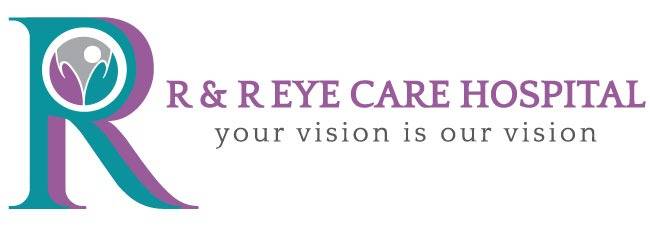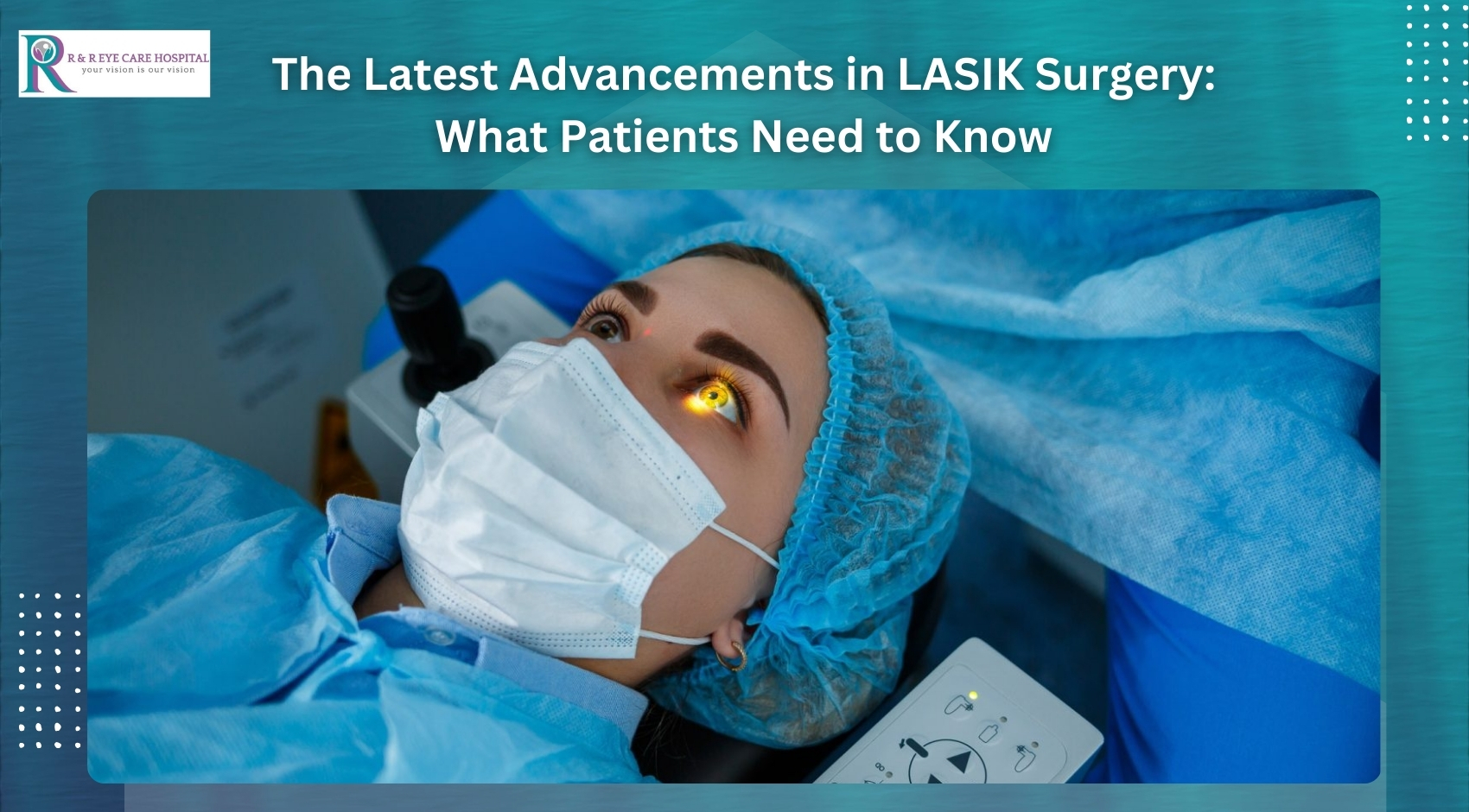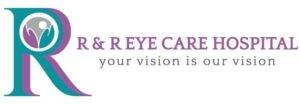At R & R Eye Care Hospital, we understand that vision is one of your most precious senses. The ability to see the world clearly without the dependence on glasses or contact lenses is a dream for many, and LASIK surgery has been a groundbreaking procedure in making that dream a reality. Over the years, LASIK has seen significant advancements, making it safer, more effective, and accessible to a broader range of patients. In this blog, we will explore the latest advancements in LASIK surgery that patients need to know.
Understanding LASIK Surgery
Before diving into the advancements, it’s essential to have a basic understanding of what LASIK surgery is. LASIK (Laser-Assisted In Situ Keratomileusis) is a popular refractive surgery designed to correct common vision problems such as myopia (nearsightedness), hyperopia (farsightedness), and astigmatism. The procedure involves reshaping the cornea (the clear front part of the eye) using a laser, allowing light to focus more accurately on the retina, thereby improving vision.
The Evolution of LASIK: A Brief History
LASIK surgery has come a long way since its inception in the 1990s. The initial procedures were revolutionary, but like all medical technologies, LASIK has evolved significantly over the years. Early LASIK surgeries relied on microkeratome blades to create a corneal flap, which was then lifted for the laser to reshape the cornea. While effective, these early procedures had limitations in terms of precision and customization.
With advancements in technology, LASIK has become more precise, with lasers replacing blades, leading to improved outcomes, faster recovery times, and reduced complications. Today, LASIK surgery is one of the most commonly performed elective procedures worldwide, with millions of people experiencing life-changing results.
Latest Advancements in LASIK Surgery
- Wavefront-Guided LASIK
One of the most significant advancements in LASIK technology is the introduction of wavefront-guided LASIK, also known as custom LASIK. This technique uses detailed measurements of how light travels through your eye, creating a unique “map” of your eye’s optical system. This map is then used to guide the laser during surgery, allowing for highly personalized treatment.
Wavefront-guided LASIK addresses not only common refractive errors like myopia, hyperopia, and astigmatism but also higher-order aberrations (HOAs) that can cause visual disturbances like glare, halos, and difficulty seeing at night. By correcting these aberrations, wavefront-guided LASIK can result in sharper vision and better overall visual quality.
- Femtosecond Laser Technology
Traditional LASIK involved the use of a microkeratome blade to create the corneal flap. However, the introduction of femtosecond laser technology has revolutionized this step. The femtosecond laser creates the corneal flap with incredible precision, reducing the risk of complications associated with blade-based flap creation.
The bladeless nature of femtosecond lasers not only enhances the safety of the procedure but also allows for the creation of thinner, more uniform flaps. This is particularly beneficial for patients with thinner corneas who may not have been ideal candidates for traditional LASIK. With femtosecond laser technology, more patients can safely undergo LASIK surgery.
- Topography-Guided LASIK
Topography-guided LASIK is another cutting-edge advancement in the field. This technique uses detailed corneal topography (a 3D map of the cornea’s surface) to guide the laser in reshaping the cornea. By focusing on the unique characteristics of each patient’s cornea, topography-guided LASIK can correct irregularities that standard LASIK may not address.
This advancement is particularly beneficial for patients with irregular corneas or those who have undergone previous eye surgeries. Topography-guided LASIK can provide more precise results, leading to improved visual outcomes and a reduced risk of complications.
- SMILE: Small Incision Lenticule Extraction
While not strictly LASIK, SMILE (Small Incision Lenticule Extraction) is a related procedure that has gained popularity as an alternative to LASIK. SMILE is a minimally invasive refractive surgery that involves the creation of a small incision in the cornea, through which a lenticule (a small piece of corneal tissue) is removed to reshape the cornea.
The benefits of SMILE include a smaller incision, which leads to faster healing, reduced dry eye symptoms, and less disruption to the corneal nerves. SMILE is particularly suitable for patients with higher levels of myopia or those who are concerned about the potential for dry eyes after surgery.
- Enhanced Safety Protocols and Patient Screening
As LASIK technology has advanced, so too have the safety protocols and patient screening processes. At R & R Eye Care Hospital, we prioritize patient safety and ensure that every patient undergoes a comprehensive eye examination before being considered for LASIK surgery.
Advancements in diagnostic tools, such as corneal tomography and optical coherence tomography (OCT), allow for a more detailed assessment of the cornea’s shape, thickness, and overall health. This thorough screening process helps identify patients who may not be ideal candidates for LASIK, reducing the risk of complications and ensuring the best possible outcomes.
- Improved Laser Precision and Speed
The lasers used in LASIK surgery have become faster and more precise over the years. Modern excimer lasers, which are used to reshape the cornea, can operate at higher speeds, reducing the time required for the procedure. Faster laser ablation not only enhances patient comfort but also minimizes the risk of corneal dehydration during surgery, leading to better results.
Additionally, the precision of these lasers has improved, allowing for more accurate correction of refractive errors. This means that patients can achieve their desired vision with greater accuracy, often reducing or eliminating the need for additional enhancements.
- Personalized Treatment Plans
One of the key advancements in LASIK surgery is the ability to offer personalized treatment plans tailored to each patient’s unique needs. No two eyes are the same, and advancements in diagnostic technology have made it possible to create highly customized treatment plans based on the specific characteristics of each patient’s eyes.
At R & R Eye Care Hospital, we utilize the latest diagnostic tools to create a detailed profile of your eyes, including your corneal shape, thickness, and any higher-order aberrations. This information is used to design a treatment plan that maximizes the effectiveness of the surgery and minimizes the risk of complications.
What Patients Need to Know Before Undergoing LASIK
While the advancements in LASIK surgery have made it safer and more effective than ever before, it’s essential for patients to be well-informed before undergoing the procedure. Here are a few key considerations:
- Eligibility: Not everyone is a candidate for LASIK surgery. Patients with certain eye conditions, such as keratoconus, severe dry eyes, or thin corneas, may not be suitable candidates. A thorough eye examination is necessary to determine if LASIK is right for you.
- Expectations: While LASIK can dramatically improve your vision, it’s important to have realistic expectations. Most patients achieve 20/20 vision or better, but some may still need glasses for certain activities, such as reading or driving at night.
- Recovery: Recovery from LASIK surgery is typically quick, with most patients returning to normal activities within a few days. However, it’s important to follow post-operative care instructions to ensure optimal healing.
- Risks and Complications: Like any surgical procedure, LASIK carries some risks, including dry eyes, glare, halos, and, in rare cases, vision loss. However, advancements in technology and improved screening processes have significantly reduced the likelihood of complications.
- Long-Term Results: LASIK provides long-lasting results, but it’s important to note that the natural aging process can still affect your vision over time. Some patients may experience a gradual decline in near vision as they age, a condition known as presbyopia. In such cases, additional treatments or reading glasses may be needed.
Conclusion: The Future of Vision Correction
The field of vision correction continues to evolve, with ongoing research and technological advancements paving the way for even more refined and effective treatments. At R & R Eye Care Hospital, we are committed to staying at the forefront of these advancements, ensuring that our patients receive the highest standard of care. With the latest advancements in LASIK surgery, we can help you achieve the clear, sharp vision you’ve always desired. Trust R & R Eye Care Hospital to guide you on your journey to better vision.




Leave A Comment